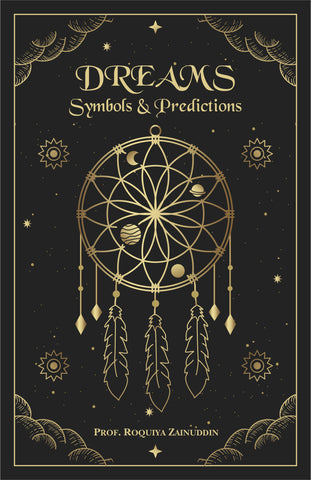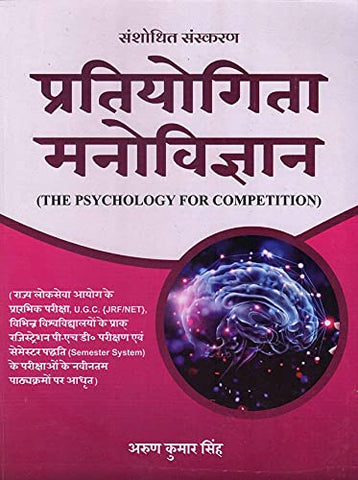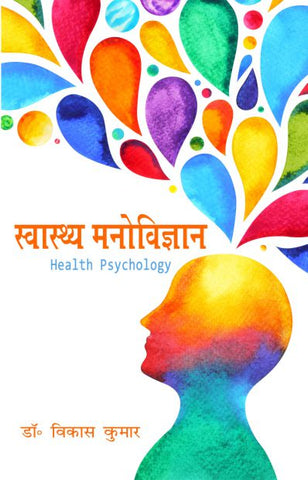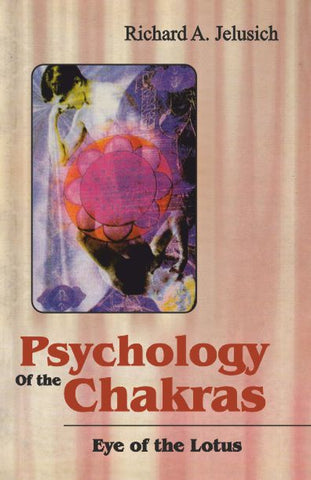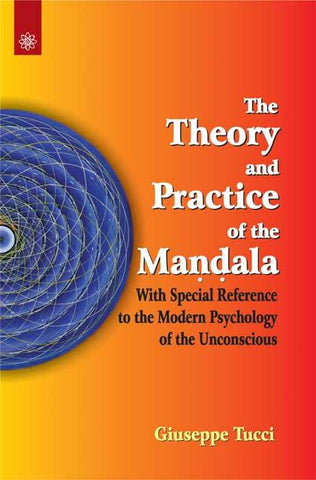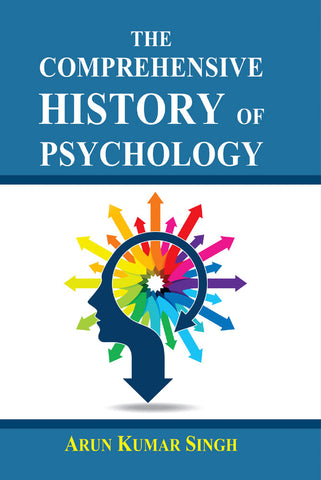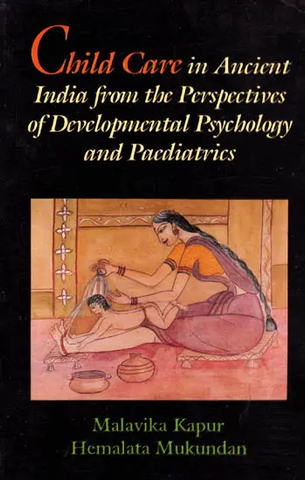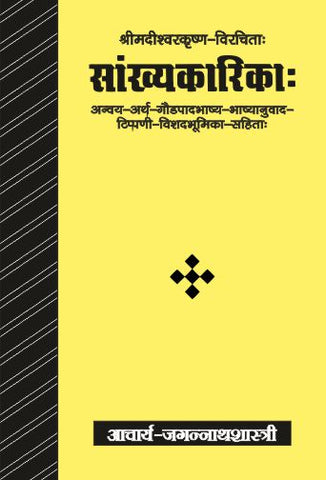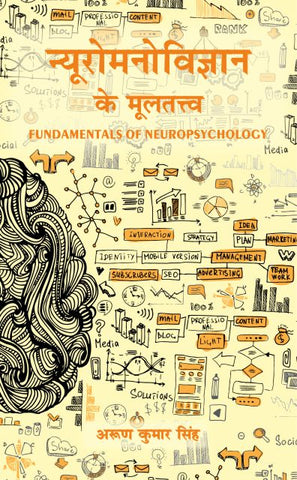Your cart is empty now.
Here is the magnificent attempt made at a constructive survey of Indian psychology. In the words of the author, ‘… the philosophical literature of India is not only rich in metaphysics but also in psychology, logic, ethics aesthetics and epistemology. There is no system of India philosophy which has not advance a theory of knowledge and which has not appealed to the facts of experience. Every school of philosophy has made valuable contributions to psychology logic ethics and other mental sciences.
The work is divided into three volumes. Volume one makes a minute and detailed discussion of the problems of perception and cognition. Volume two deals comprehensively with questions associated with emotion and will. Volume three is exclusively devoted to the analysis of epistemology and its perceptional aspect.
Indian psychology created a new standard in scholarly work on its first publication by Kegan Paul in the thirties. The present reprint of all the three volumes of this classic meets the needs of students and teachers of Indian psychology as well as the general reader philosophical-psychological literature.
Jadunath Sinha (b 1892 in Undivided Bengal) received his Ph.D. for extraordinary dissertation on Indian epistemology. He taught philosophy at the colleges in Calcutta, Rajsahi, Dacca and Meerut. He was eminent as a teacher as well as academic philosopher. He died in 1978.
Dr. Sinha wrote several books tracts and reviews. Some of his works are; Indian Philosopher (6 Vols.) Indian Realism Vaishnav Vedanta (5 Vols.) and Comparative Religions (4 Vols.)
I had spiritual experiences throughout my life. I had visions of great saints like Samkara, Ramanuja, Nimbarka, Caitanya, Sri Aurobindo, Sri bamdev and others who prompted me to write Indian Philosophy and Indian Psycholgy.
I had vision of Lord Krishna, Lord Siva and divine Mother Tara who had blessed and bestowed grace on me. I have devoted fifty years of life in severe spiritual discipline, shunned luxury undergone penances studied meditated disseminated knowledge went on pilgrimages resorted to saints yogins and seers. My source Sanskrit texts.
The first edition of the book was published by kegan Paul, Trech, Trubner, & Co London under the title Indian Psychology Perception.
In the second edition chapters in Memory, Imagination, Thought and language were added and the same was published by Sinha Publishing House, Calcutta, under the title Indian Psychology Cognition which constitutes the first volume of Indian Psychology.
The available material on the psychology of imagination and thought is scanty and inadequate. Hence the treatment of these topics is not as comprehensive as that of perception. But there is vast material on the psychology of language on different topics, which could not be incorporated in the body of the book has been embodied in the Appendix.
My special thanks to my son Amiya Kumar Sinha Executive Director, Jadunath Sinha Foundation and founder Bamdev International Centre who took great pains to get the second edition of the book published and further helped me in preparing the manuscripts of all the volumes.
The crowning achievement of the Hindus was metaphysical speculation. But the philosophical literature of India is not only rich in Metaphysics but also in Psychology, Logic, Ethics, Aesthetics and Epistemology. There is no system of Indian philosophy which has not advanced a theory of knowledge and which has not appealed to the facts of our experience. Every school of philosophy has made valuable contributions to Psychology Logic, Ethics and other mental science. But these have never been treated as separate branches of study in India.
The Hindu mind is essentially synthetic. It always analyses a problem into its various aspects, and considered them in their synthetic relation to one another. It never destroys the organic unity of subject and makes a compartmental study of its different aspects. In the philosophical literature of India we find a synthetic treatment of a problem in all its multifarious aspects psychology, logical Ethical and metaphysical. In the later stages of the development of Indian thought, though we come across separate treatises and monographs on logic and Epistemology we find them mixed up with Metaphysics. There is not a single work which is exclusively devoted to the psychological analysis of mental processes.
But though there are no independent sciences of Psychology, Logic, Ethics, Epistemology etc. we can collect ample material from the original works on different schools of Indian philosophy dealing with these mental sciences, disengage them from their metaphysical setting and make a consistent study of them. Indian Metaphysic has, for some time past evoked a great deal of interest among the Eastern and Western orientalists. In recent times some comprehensive works have been published on systems of Indian philosophy, which incidentally treat of Psychology, Logic, and Ethics. Some valuable works on Indian Logic and Indian Ethics also have been published. Mrs. Rhys David’s Buddhist Psychology is a monumental work on the psychology of the Buddhist. But no attempt has yet been made to give a comprehensive account of the psychology of the Hindu.
The present work is an attempt at a constructive survey of Indian Psychology. The aim of this book is to give in brief compass an outline of the most important topics of Indian Psychology. It will be complete in two volumes. The first volume is wholly devoted to the psychology of perception. The subject is vast and immense in scope, and there is abundant wealth of material on this subject. My account of the psychology of perception is not complete and comprehensive. My task here is not an historical survey of all the problems of perception in their logical chronological order but a systematic exposition and interpretation of the most fundamental problems of perception in their logical development of thought. I have tried to throw light on different topics from the different standpoints of Indian thought.
There is no empirical psychology in India. India Psychology is based on Metaphysics. The psychological account of some problems of perception, e.g. perception of the self perception of universal etc. is unintelligible without consideration of their metaphysical foundations. So I found it extremely difficult to avoid metaphysical considerations altogether in my treatment of these topics.
Indian Psychology is based on introspection and observation it is not based upon experiments. Students of introspective psychology will find ample food for reflection in Indian Psychology. They will find acute psychological analysis of some very subtle mental process which have not yet attracted the attention of the Western psychologists.
I have indulged in comparisons of Indian Psychology with Western Psychology here and there which I am sure will be agreeable to some and disagreeable to other. But such comparisons are unavoidable to students of Indian and Western Psychology though they may be misleading.
The present work was planned and partly composed more than a decade ago. Different parts of this work were submitted to the Calcutta University for Premchand Roychand Studentship in 1922, 1923 and 1924. The work was completed in 1924 and some portions of it were published in the Meerut College Magazine in 1924 and 1926. But owing to unforeseen circumstances its publication has been delayed so long. The work has since undergone considerable alterations in the course of revision.
I acknowledge my deep debt of obligation to sir Brajendra Nath Seal then George V Professor of philosophy of Calcutta University who suggested the subject to me indicated the main line of research and helped me with important reference.
In addition to the works referred to in the footnotes, I desire to express my general debt to the works of Thibaut, Keith Mrs. Rhys Davids Aung S. C. Vidyabhushan, Ganganath Jha, and S. N. Das gupta.
My best thanks are due to Professor Haridas Bhattacharya of the Dacca University who was good enough to go through a considerable part of the MS. and helped me with many valuable suggestions. I am also obliged to the publishers for their expending the publication of the work.
In preparing this book I collected material on Emotions from fifty works on Sanskrit Rhetorics (Alankara). It took two years to put the materials into shape and published it in the form of a book.
It elaborately deals with the Psychology of Emotions, Alankara, Aesthetic sentiments (Rasa), Nascent Love (Rati) Ardent Love (Prema) Sex and psychology of religion. It also deals with conation, Volition and Will. It deals with Rupa Gosvami’s analysis of devotion and sentiments of devotion and refers to Jiva Gosvami’s view. This is the most comprehensive book based on Sanskrit works.
My special thanks to my son Amiya Kumar Sinha Executive Director, Jadunath Sinha Foundation for procuring the books from research libraries helping me to get the manuscript prepared and publishing the first edition of the book
This book is a sequel to my Indian Psychology: Perception published by Kegan Paul, Ttrench, Trubner & Co., London. It was written long ago. I was awarded Griffith Memorial Prize by the University of Calcutta for my thesis on Indian Epistemology of Indeterminate and determinate Perception (Chapter I and II) in 1923. I was awarded the Mouart Medal by the same university in 1925 for the completion of research for Premchand Roychand Studentship fro three years. Indian Epistemology of Perception was my thesis for 1925. It contained epistemology of indefinite perception, illusion, hallucination, recognition, supernormal perception and divine perception. The last chapter dealing with recollection, self knowledge and object and general problems of Indian Epistemology has been added. The chapter on illusion has been revised.
My special thanks to my son Amiya Kumar Sinha, Executive Director Jadunath Sinha Foundation in planning and giving shape to this third volume of Indian Psychology.
| Preface to the Reprint | xv |
| Preface to the First Edition | xvii |
| The physical Basis of Perception | 1 |
| Introduction–The Nature of the sense-organs–The BuddhistThe Jaina–The Samkhya – The yoga – The Origin of the Sense- organs – The Principal and Subordinate Organs – The Vrtti of the Sense-organs- The Samkhya-Susruta and Caraka – The VedantaMimamsaka – are the Karmendrias really Sense-organs?- are there three internal Organs?- Is the Manas a Sense-organs-Are theExternal Sense-organs Prapyakari or Aprapyakari?- The Buddhist - The Nyaya-Vaisesika- The Samkhya- The Mimamsaka- The Vedanist – Are the External Sense-organs Physical (bhautika)orPsychical (ahamkarika)? – Is there only one Sense-organ? – Is the Tactual Organ the only Sense-organ? | |
| Indeterminate Perception and Determinate Perception | 31 |
| Introduction- Samkara-The Buddhist–The Mimamsakas–The Samkhya–The Vaisesika-The Naiyayika-The Neo-Naiyayika-The Neo-Samkarite – Ramanuja- Madhva and Vallabha – The Sabdika denial of Indeterminate Perception – The Naiyayika Criticismof the Sabdika View- Proof of the Existence of Indeterminate Perception - Proof of the Existence of determinate Perception – The - Does determinate Perception involve Inference? | |
| The Objects and Conditions of Perception | 67 |
| The Object of Perception – Olfactory Perception – Gustatory Perception- Auditory Perception- Visual Perception – Tactual Perception - Internal Perception – Common Sensibiles – The Condition of Knowledge – the General Conditions of External Perception – The Conditions of Visual Tactual, Olfactory, and Gustatory Perception. | |
| Perception and Sannikarsa | 75 |
| Introduction - The earlier Nyaya-Vaisesika – The Later Nyaya-Vaisesika view of alaukika Sannikarsa – Samanya- Laksana-Sanni-karsa – Jnana-Laksana-Sannikarsa – Yogaja-Sannikarsa – The Mimamsaka -the Vedanta | |
| Acquired Perception | 86 |
| Introduction – The Jaina – the Samkara-Vedantist – The Nyaya- Vaisesika – The Neo-Naiyayika | |
| Recognition | 94 |
| The Nature of Recognition – The Buddhist – the Nyaya-Vaisesika- The Mimamsaka – The Advaita Vedantist – The Jaina – TheJaina Criticism of the Nyaya-Vaisesika View – The Jaina Criticism of the Buddhist view. | |
| Theories of Perception | 104 |
| The Buddhist theory of Perception – The Jaina theory of perceptionthe Naiyayika theory of perception – The Neo- Naiyayika theory of perception – the Mimamsaka theory of perception - The Samkhya theory of perception – The place and function of the Sense-organs – The Function of the external Sense-organs – The function of the Manas – The function of Ahamkara – The function of Buddhi – The unity of the functions of the internal organs- The relation of the external sense-organs to the internal organ- The Purusa as the Transcendental Principle in perception – The Relation of the Sense- Organs to the purusa – The Conditions of perception The Vedanta theory of perception – the identification of Pramana-caitanya with Prameya-caitanya – The identification of Pramana-caitanya with Pramana-caitanya – The internal perception -The identify of Locus of the mental mode and the object – the - The fitness of the object – The Different Kinds of perception- The function of Antahkarna and the Sense-organs in perception- The Vedanist Doctrine of Vrtti-objections to the VedanistDoctrine of Vrtti Considered | |
| Perception of Space and Movement | 140 |
| Introduction- The Mimamsaka – Direct Auditory Perception of Direction Distance and position – The Mimamsaka Explanation of the Extra organic localization of sounds – The Buddhist Explanation of the Extra organic localization of sounds- The Mimamsaka Criticism of the Buddhist View – Perception of movement- Theprabhakara – The bhatta Mimamsaka – The Vaisesika | |
| Perception of Time | 148 |
| Introduction–is time an object of perception ?-No Perceptionof time as an Independent Entity-perception of the present - The sensible present is instantaneous (The Buddhist View)- TheSensible present has Duration ( the Naiyayika and the Vedantist View). | |
| 163 | |
| Perception of the Universal (jati) | |
| Introduction–The Buddhist Doctrine of Nominalism–The Buddhist Criticism of the Nyaya-vaisesika Realism–The Buddhist Criticismof the Srotriya view–The Buddhist Criticism of the Bhatta Realismfied Nominalism of the Jaina–The Jaina Criticism of the Nyaya-tions–The Modified Nominalism of Ramanuja–The Realism of Kanda–The Nyaya-Vaisesika Realism–The Nyaya-vaisesikaCriticism of Buddhist Nominalism–The Prabhakara realism-The Bhatta Criticism of the Jaina Doctrine–The Bhattaof Prabhakara’s objections–the Bhatta Doctrine of Identity-inDifference–the Modified Realism of Sanskara. | |
| Perception of Cognition | 199 |
| Introduction- The bhatta Mimamsaka – The Nyaya-Vaisesika Criti-cism of the Bhatta Doctrine – The Jaina Criticism of the BhattaDoctrine–The Ramanujist’s Criticism of the Bhatta Doctrine - another school of Mimamsa–Criticism of the Doctrine – Prabha-kara–Criticism of Prabhakara’s Doctrine–The Nyaya-Vaisesika -The Jaina Criticism of the Nyaya-Vaiesika Doctrine–The Samkhya-patanjal – The samkara-Vedantist – Ramanuja’s Criti-cism of Samkaras’s Doctrine | |
| Perception of the Self | 222 |
| Introduction – The Carvaka – The Buddhist Idealist–The Naiya-yika–The Naiyayika’s Criticism of the Bhatta Mimamsaka View- The Naiyayika’s Criticism of Samkara’s View–the Vaisesika - The Samkhya-Patanjala–The Bhatta Mimamsaka–The Bhatta’sCriticism of the Naiyayika doctrine–The Bhatta’s Criticism of Samkara’sDoctrine–The Prabhakara Mimamsaka–The Prabhakara’s Criticism ofSamkara’s View–Prabhakara’s Criticism of Kumarila’s View–The Jain–The Upanisads–The Samkara-Vedantist–The Self and Con-sciousness–Samkara and Prabhakara–Jiva and Atman–Samkara’sView of Atmapratyaksa–The later Samkarites View of Atmaprat-yaksa–The Ramanuja-Vrdantist–Comparison of the Different Views | |
| Indefinite Perceptions | 263 |
| Different Kinds of Indefinite Perceptions–Samsaya–Oha–Samsayaand Oha– Anadhyavasaya–Samsaya and Anadhyavasaya | |
| Illusions | 273 |
| Introduction–Different Kinds of Illusions–Anubhuyamanaropaviparyaya and smaryamanaropaviparyaya–Indriyaja Bhranti (Illusion) and Manasi bharti (hallucination) – Different Causes of Illusions – Psychological Analysis of an Illusion–Prabhakara’s Ana-lysis–The Nyaya-Vaisesika Analysis–The Samkara-Vedantists Ana-lysis–Illusion (viparyaya) And Doubtful Perception (samsaya) - Different Theories of Illusions–The Doctrine of Akhyati–TheDoctrine of Asatkhyati–The Doctrine of Atmakhyati–The Doctrine of Alaukikakhyati–The Doctrine of Anirvacaniyakhyati-The Doctrine of Sathyati–The Doctrine of Sadasakhyati–TheDoctrine of Prasiddharthakhyati–The Doctrine of Vivekakhyati -The Doctrine of Anyathakhyati–Different Theories of IllusionCompared. | |
| Dreams | 307 |
| The Psychological Character of Dream-consciousness – The Presen-tative Theory of Dreams – The Representative Theory of Dreams - Prabhakara’s Representative Theory of Dreams – The Nyaya-Vaisesika Criticism of the Prabhakara Theory – The SamkariteCriticism of the Nyaya-Vaisesika Theory - Dreams, Illusions, andIndefinite Perceptions – Dreams and hallucinations – Classification of Dream’s – Caraka’s Classification – The Vaisesika Classification - the Buddhist Classification – Different Kinds of Dreams – Dreams due to Peripheral Stimulation (Dream-Illusions) – Dream due to Subconscious Impressions (Dream-hallucinations) – Dreams as theFulfillment of Desire (Dream-hallucinations) Prophetic or Veridical Dreams – Telepathic Dreams – Dreams-within-dreams – physiolo-cal Basis of Dreams – Theories of Dream | |
| Abnormal Perceptions | 325 |
| The Treatment in the Samkhya – The Treatment in the AncientMedical Literature – Mechanism of the Visual Organ – Abnormalitiesin Visual Perception – Timira (Loss of Vision) – Abnormalities ofAuditory Perception – Abnormalities in Olfactory Perception - Abnormalities in Gustatory Perception – Abnormalities in TactualPerception – Disorders in the motor Organs – Mental Blindness (manobhava) – Causes of Sense-disorders and Mental Disorders. | |
| Super-Normal Perceptions | 335 |
| Introduction–The Mimamsaka denial of Yogi-pratyaksa–TheNyaya-Vaisesika View of Yogi-pratyaksa - Prof of the Possibilityof Yogi-pratyaksa - The Nature of Yogi-pratyaksa–Yogic Percep-tion and Ordinary Perception –Yogic perception and Divine Per-caption–Different Kinds of Yogi-pratyaksa- Yuktapratyaksa andViyuktapratyalsha–Savikalpa and Nirvikalpa Yuktapratyaksa –Sam- prajnata Samadhi and Asamprajnata Samadhi–Other kinds of Supernormal Perception–Arsajnana (Intuition)of Sages )–SiddhaDarsana (Occult Perception)–Pratibhajnana (Flash of Intuition inOrdinary Life)–Yogic Perception of Dharma (Duty or Moral Law)- The Samkhya–The Patanjala–The Samkara-Vedantist – The Buddhist–the Jaina–The Jaina Criticism of the Nyaya-VaisesikaDoctrine of Yogic Intuition–The Jaina Doctrine of Omniscience-The Mimamsaka’s objections to the Jaina View of Omniscience -The Jaina Refutation of the Mimamsaka’s Objections | |
| Divine Perception | 368 |
| Patanjali’s Proof of Divine Omniscience–The Naiyayika View of the Nature of Divine Knowledge–Divine Knowledge and HumanKnowledge–Divine Omniscience and Human Illusions | |
| Jiva-Saksipratyaksa and Isvarasaksi-Pratyaksa | 373 |
| The Samkara-Vedantist – The Jiva and the Jiva-saksin – Isvara andIsvara-saksin. | |
| Memory and Imagination | 376 |
| The nature of Recollection: Its Kinds–The Nyay The Jaina -The Samkhy– The Yoga–The Mimamsa–The Samkarite-Ramanuja –Recollection and Inference – Recollection and Recogni-tion – Memory and Identity of the Self–The Nyaya–The AdvaitaVedanta–The Nature Causes and effects of impressions–theBuddhist–The Nyaya–The Vaisesika–The Navya Nyaya–TheMimamsa–The Vedanta–The Condition of Retention –Causes ofImpressions–The Conditions of Recall–The Buddhist – The Vaise-sika–The Nyaya–The Alankara–The Effects of Recollection -The Vaisesika – Suggestion and Association – The Buddhist–Lossof Memory–The Bhagvad Gita–Caraka - The Nyay-Vaisesika - the nature of Imagination – memory and Imagination–Reverie - Yoga–Presumption–Tarka -Hallucination | |
| Thought and Language | 441 |
| The Nature of Concepts–The Nyaya-Vaisesika View–TheBuddhist View–Kalpana and abhilapa–The Buddhist View-qualified Cognition–Judgment–Reasoning or Inference–Nyayaand Advaita Vedanta–The nature and Import of a worldThe means of learning its meaning–The Buddhist doctrineof Apoha–Ratankirti–Vidhivadin–Pratisedhavadin–Dharmottara -Ratenkirti’s Criticism of Dharmottara Kumarila, Vacaspati,Nyayabhusana and Trilocana–The Nyaya Criticism of theBuddhist doctrine of Apoha–Uddyokara and Jayanta Bhatta’sCriticism–The Mimamasaka Criticism of the Buddhist doctrine of Apoha–kumarila’s Criticism–The Jaina View of the import ofa word–Prabhacandra, Manikyanandin, Vidyananda Svami and Kundakunda Svami’s View – Akrtivada – Jayanta Bhatta’s Criti-cism of Akrtivada–Vyaktivada–Criticism of Jativada - Jativada -Criticism of Vyaktiada–The Nyaya Jati-Vyakti-Akrtivada- Criticism of Jativada–The yoga doctrine of Sphota –The Sabdikadoctrine of Sphota–Padasphota–The Jaina Criticism of the Sab-dika doctrine of Sphota–The Mimamasaka Criticism of the Sabdikadoctrine of Sphota–The Vaisesika Criticism of the Sabdikadoctrine of Sphota–The Nyiyayika Criticism of the Sabdika doctrine of Sphota–The Advaita Vedanta Criticism of the Sabdika doctrine of Sphota (padasphota)–The nature and Import of aSentence (Vakyartha)–The Sabdika Doctrine of sentence–from(Vakyasphota) and its Criticism–The Doctrine that a Sentence isa Cognition (Anusamhrti)–Prabhakara’s doctrine of Anvitabhi-dhana and criticism of Abihitanvayavada–The Bhatta MimamsaCriticism of Anvitabhidhanavada–The Nyaya Criticism of Anvitabhidhanavada–The Nyaya and kumarila’s doctrine of Abihitanvaya–Anviyamanabhidhanavada–Abhidhiyamana-nvayavada–The Doctrine of Anvitabhidhana in a general way andAbhihitanvaya in a special way–the Jaina doctrine of the Import of a sentence and Criticism of Abhihitanvaya. | |
| Appendix | 477 |
| The Jaina views on the manas–venkatanatha’s view of indeter-minate and determinate perception–Non-perception–The Buddhist view of Sense-Object-Contact–The distinguishing mark of Perception–Pre-adaptation in the perceptual process–the Jainaviews of Perception–Matijnana–Srutajnana–Venkatanatha’s Criti-cism of Prabhakara’s view that movement is not an object of per-caption–Nagasena’s view of time–The Yoga view of time as aconstruction of the intellect–Purusottamji Maharaja’s view of thePerception of time and space–The Jaina view of a self aware cognition–Ramanuja’s view of a self-luminous cognition–Venkata-natha’s Criticism of Kumarila’s doctrine of Cognizedness (jnatata)- Venkatanatha’s view of self luminosity of a cognition–Venkata-natha’s Criticism of the Doctrine that denies apprehended ness of acognition–Kesavamistra’s view of cognition–The Samkhya and theAdvaita Vedanta view on the nature of dreams–PurusottamjiMaharaja’s view of the perception of the self–The Samkhya viewof the perception of the self–Nyaya-Vaisesika view of theperception of the pure self–Vasubhandu’s view of four Kinds ofMeditation–Omniscience of the Buddha on reflection–The Jainaview of Avadhijnana–Manahparyayajnana–Kevalajnana–The rela-tion of Matijnana, Srutajnana, Avadhijnana, Manahparyayajnana,and Kevalajnana–The Jaina and Nyaya views of recollection andRecognition–nagasena’s view on the marks of reflection, investi-gation, Reasoning and Wisdom. | |
| Index | 505 |
| Preface | xvii |
| Body and Self | 1 |
| The gross body – The Subtle Body (suksma deha linga deha)- The Causal Body (karana deha) – The Spiritual Body (cinmayadeha.) | |
| Degrees of Consciousness | 28 |
| The four Grades of Consciousness–The Waking state (jagrat)Dreams–Deep sleep-Theories of Sleep–Trance–Swoon (murccha)-Death (marana) | |
| The Modes of Consciousness | 45 |
| The Upanisads–The Samkhya–The Yoga–The Vedanta–The Jaina–The Kinds of Sensations. | |
| Pleasure and Pain | 55 |
| The Nature of Pleasure–The Kinds of Pleasure –Pleasure is apositive feeling–Pleasure and pain are two irreducible feelings-Inseparable Relation of Pleasure and Pain two each other–Thenature of pain–The Kinds of pain–Neutral Feeling–No Mixedfeeling of pleasure and pain–are pleasure and its means Pain?-Feeling and cognition–The Relation of Feeling to CognitionConation, Attention Desire and Volition–The Memory of Feelings-The relation of feeling to the Organism–The Physiologicaltheory of pleasure and pain–The Buddhist doctrine of feeling | |
| Springs of Action: Desire, Aversion and Emotions | 91 |
| The Nyaya Account–The Vaisesika Account–The Yoga Account-The Account of the Upanisads–The Advaita Vedanta Account-The Jaina Account–The Caraka’s Account | |
| Emotions | 102 |
| The Vedantist analysis of Emotions Attachment (raga)–Clinging (asanga)–Thirst or Yeaning (trsna)–Desire–Satisfaction (San-tosa)–Lust (kama)–Detachment (asakti) – Desirelessness–Love orAffection (abhisvanga)–Non affection (anabhisvanga)–Joy (harsa)-Anger (krodha)–Resentment (amarsa)–Non anger (akrodha)-grief (soka Dejection (visada)–fear (bhaya)–Anxiety (udvega) -Security (abhaya) – greed (lobha)–Longing (sprha)–Absence of longing (nihsprhata)–hope (asa)–Non greed (alolupatva)–Pride(mada)–Inordinate self conceit (atimana)–Self praise (atmasam-bhavana)–haughtiness (stambha)–Boast (darpa)–Non egoism orpridelessness (anahamkara)– Absence of the sense of mine (nir-mamata)–Envy (amarsa matsarya)–Intolerance of excellence(abhyasuya)–Non censoriousness (apaisuan)–hate (Dvesa)absence of hatred (advesa)–Non enmity (avaira)–mastery (isvarabhava) – Spiritedness (tejas)– Modesty or absence of Egoism(amanitva)–Self abasement (nirveda)–emotions are due to falseknowledge–Delusion (maha)–Non delusion (asammoha)–forgiveness (ksama)– compassion (daya karuna)–Benevolence (dana)-Tenderness (marvada)–Harshness (parusya)– Cruelty (krurata)- gladeness (mudita) -Cheerfulness (saumanasya)–purity of mind(manahprasada) – purification of the mind (sattvasamsuddhi) - purity of motive or intention (bhavasamsudhi)–Natural purity of the self–firmness (dharti)–Forbearance (ksama)–Contentment(trusti)–Equanimity (samata) equality (samtva)– Tranquility(santi)–endurance (titiksa)–friendship (maitri)–wonder (vismaya)– shame (hri)–remorse (anutapa)–Transcendence of the sense of the Duality – Transcendence of sattva, rajas and tamas(nistraigunya) – Indifference (udasinata)–independence (anapek-sata)–sattva Rajas and tamas are the roots of emotion–Com-troll of emotions– patenjali’s analysis of emotions and their interrelation–the Jaina analysis of Emotions. | |
| The Nature of Aesthetic Emotions (Rasa) | 163 |
| The nature of Aesthetic Emotion (rasa)–The Origin of anAesthetic Emotion (rasa) | |
| Sentiments (Sthayibhava) | 175 |
| The Nature of Sthayibhava–love (rati)–Mirth (hasa)–Grief(soka)–Anger (krodha)–fear (bhaya)–disgust (jugupsa) –Won-der (vismaya)–energy (utsaha) | |
| Accessory States Transitory Emotions (Vyabhicaribhava) | 207 |
| The nature of Accessory states or Transitory Emotions (Vyabhi-caribhava)–Self – abasement (nirvada)–languor (glani)–apprehension (sanka)–envy (asuya)–Exhilaration (mada)–fatigue(srama)–Indolence (alasya)–misery (dainya)–Anxiety (cinta)-stupor (moha)–recollection (smrti)–Contentment (dharti)–shame(vrid)–inconstancy (capalata)–joy (harsa)–Agitation (avega)-perplexity (jadata)–pride (garva)–dejection (visada)–Impatience(autsukya)–Fierceness (urgata)–Revenge (amarsa)–Terror (trasa) - Deliberation (vitarka)-Ascertainment (mati)–dissimulation (ava-hittha)–sickness (vyadhi)–epilepsy (apasmara)–mental derange-ment (unmada)–Dream (svapna)–sleep (nidra)–deep Sleepsputa)–awaking (vivodha)–death like condition (marana)–are there other accessory emotions? Emergence subsidence Blendand friction of Emotions–bhava and rasa , Bhavabhasa and Rasabhasa –the Relation of Transitory emotions to the another | |
| Sativikabhava | 276 |
| The nature of Sativikabhava–Eight Kinds of Sativikabhavas-Stambha–Sveda–Romanca -Svarabheda–kampa–Vaivarnya-Asru–Pralaya | |
| Different Kinds of Aesthetic Emotions or Sentiments (rasa) | 285 |
| Vibhava, Anubhaya, Vyabhicaribhava and Rasa Bhava and Rasa-The eight aesthetic sentiments (Rasa)–the Erotic Sentiment(srngararasa) – The Comic Sentiment (Hasyarasa)–The pathetic Sentiment (Karunarasa)–The Furious Sentiment (raudrarasa) - the heroic (virarasa)–The terrible Sentiment (bhaya-nakarasa)–The Odious sentiment (Bibhatsarasa)–The Marvelloussentiment (adbhatarasa)–The Quite Sentiment (Santarasa)–Thesentiment of Parental affection (vatsalarasa)–Is the Sentiment of devotion (bhaktirasa) possible?Are there painful aesthetic sentiments? The Causal relation, Conflict and harmony of theaesthetic Sentiments (Rasa). | |
| Emotions derived from Love | 322 |
| The Causes and Kinds of Nascent Love (Rati)–The Stages and Variants of Ardent Love (Prema). | |
| The Evolution of Sex-Consciousness | 341 |
| The Age-cycle in relation to the Evolution of sex-consciousness - The Behaviour of an Artless Enamoured Girl and the Behaviour of Enamoured Women in general–The Natural Graces of Youth - English Classes of Heroines in a Drama | |
| Religious Emotions | 352 |
| Faith (sraddha)–Devotion (bhakti)–The Nature of devotion(bhakti)–The Characteristics (laksana) of devotion–devotionand knowledge–devotion and emotions and passions–devotionand desire–devotion and action–Devotion and social and Religious Observances–Devotion and Virtues–Devotion Sin andAtonement – Persons eligible for the cult of devotion–the cultof devotion is the highest of all–taking refuse in god (Prapatti) surrender of all action to god (sarvakarmarpana)–Devotion of self to god (atmanivedana)–Undivided and unconditional love forgor (ahaituki ananya bhakti)–The Means of Devotion. | |
| Religious Emotions: Kinds of Devotion | 405 |
| The Bhagavad Gita: Distressed Inquisitive Selfish and WiseDevotes–The Bhagavad: Tamasa, Rajasa, Sattvika, andNirguna Devotion–Narada and sandiya: Primary and secondaryDevotion–madhusudana: Three classes of Devotees ; srinivasaDevotion as means and devotion as end–balakrsna bhatta:Maryadabhakti and Pustibhakti–Rupa Goswami: Sadhanabhakti Bhava-bhakti and Prema-bhakti–Rupa Goswami : Ragatmika Raganuga, Kamarupa, Sambandharupa ; Kamanugaand Sambandhanuga bhakti–Rupa Goswami : Kinds of devotion:Devotion inspired by transcendent love (bhavabhakti) : devotiondue to intense spiritual discipline devotion due to the grace ofKrsna or his devotee bhavapratibimba and bhava-chaya–RupaGoswami: Kinds of devotion : ardent love fro god (prema) due to nascent love or to his lordship or unmixed with it – Jiva Goswami: Kinds of devotion Ardent Love for god (prema)Rupa Goswami: Rati Prema, Pranaya, mana, Sneha, Raga, Anuragaand amhabhava–Jiva Goswami : stages of the Emergence of lovefor God–Five Kinds of Permanent Emotional Disposition ofLove for god Quiet Love , Loving Servitude , Friendly Love Parental Love and wifely Love or Extranuptial holy Love | |
| Religious Statements (Bhaktirasa) | 436 |
| The Common Religious Sentiment of devotion (Smanyabhaktirasa)-The Quiet Religious Sentiment (santabhaktirasa)–The Religious Sentiment of Loving Servitude (Pritibhaktirasa, DasyabhaktirasaThe Religious Sentiment of Friendly Love (Preyobhaktirasa)The Religious Sentiment of Parental Love (Vatsalabhaktirasa)The Religious Sentiment of Wifely Love or Extra-nuptial HolyLove (Madhurbhaktirasa)–The Subordinate Religious Sentimentsof devotion (gaunabhaktirasa)–Harmony and conflict among theReligious Sentiments–Apparent Religious Sentiments (Rasabhasa)Uparasa, Anurasa and Aparasa–The Religious Sentiment ofdevotion (bhaktirasa) is transcendental (alaukika)–Jiva Goswami denial of Aesthetic or Dramatic Sentiment and their Transcen-dental nature | |
| Attention | 476 |
| The Nature of attention–The Determiners of attention – Distrac-tion – Physiological and psychical Correlates of Distraction and means of overcoming distraction–Attention and perceptionattention and recollection–Attention and Consciousness -Attention and Interest and Desire–Attention and InhibitionAttention and eightfold yoga. | |
| Nonvoluntary and Voluntary Action | 495 |
| Nonvoluntary and Voluntary Actions–Instinctive Actions–Is theNew-born Child’s drinking Mother’s milk Instinctive?–The new-Born child’s emotions– emotional expressions–desire, desire to Act, Aversion, Volition, and Voluntary Action–The Prabhakaraview of the Cause of a Volition–Gangesa’s exposition of the Prabhakara view of the Cause of a Volition Action–Gangesa’s(Nyaya) Criticism of the Prabhakara view of the Cause of aVoluntary Action–Visvanatha’s Exposition of the Prabhakara view of the Cause of volition–Visvanatha’s and Janakinath’s exposi-tion of the Nyaya view of the Cause of a Volition–Gagabhatta’sCriticism of the Nyaya view and exposition of the Bhatta viewof the Cause of Volition–The Conditions of Overt Action-Kinds of Actions–The Physical Elements in a Volition. | |
| Index | 559 |
| 1 | |
| The General Problems of Indian Epistemology | |
| The Nature of Pramana–The Naiyayika View–The SamkhyaView-The Nyaya criticism of the Samkhya view–The Mima-msaka View–the Jaina View–The Buddhist View–The Samkara-Vedantist View–The Nature of valid Knowledge– (Prama or Pramiti)–The Nyaya-Vaisesika View–The JainaView–The Mimamaska View–The Advaita Vedantist View–The Samkhya View–The Buddhist view–Criticism of the Samkhya Doctrine–The Criticism of the Buddhist Doctrine–Criticism of the Naiyayika Doctrine–The Advaita Vedantist View–The Naiyayika Defence of his own position | |
| 23 | |
| The Different Theories of the Value of Indeterminate and determinatePerception : | |
| The Values of indeterminate Perception (Nirvikalpa pratyaksa)The Buddhist View : Indeterminate Perception alone is Valid –The Jaina View : Indeterminate perception is invalid and non-exixtent–The Sabdika View : No Indeterminate Perception– The Neo-Nyaya-Vaisesika view : Indeterminate perception is neithervalid nore invalid–The older Nyaya-Vaisesika Doctrine : Indeter-minate Perception is valid–The NeoSamkarite Doctrine : Inde-terminate perception is valid–The objects of Indeterminate Perception. | |
| 32 | |
| The Value of Determinate perception (Savikalpa Pratyaksa) | |
| The Buddhist Doctrine : Determinate Perception is invalid–The Doctrine : Determinate Perception is valid : The Jainadoctrine : Determinate Perception is valid–The Jaina Criticismof the Buddhist Doctrine of Invalidity of Determinate Perception- The older Naiyayika Doctrine : Determinate Perception isvalid : The Naiyayika Criticism of the Buddhist Doctrine–The Vasiesika Doctrine : Determinate Perception is Valid–TheMimamsaka Doctrine : Determinate Perception is valid : TheAdvaita Vedantist View : Determinate Perception has empirical validity–The Visistavaita Vedantist View : Determinate Perception is valid– The Madhva Doctrine : Determinate Perception alone is valid–the Vallabhite Doctrine : Deter-minate Perception is valid–The Samkhya theory Determinateperception is valid–Different Kinds of vikalpas–The Differ-ence between vikalpas and illusion–The Naiyayika criticism of the Buddhist theory of Vikalpas–The Vaisesika criticism of the Buddhist theory of Vikalpas or kalpana– The Samkhya-Yoga doctrine of vikalpa–The Advaita-Vedantist theory of Vikalpa – Perception in relation to the sense and the understanding or intellect–The Samkhya-Yoga View–The Vaisesika Dictrine of Apeksabiddhi. | |
| 68 | |
| The Epistemology of Recognition | |
| The Epistemic value of Recognition | |
| 76 | |
| The Epistemology of Illusion | |
| The epistemic value of illusion–The object of an illusion–The Yogacara doctrine of Atmakhyati–The Madhyamika doctrineof Asathyati–The Samkhya doctrine of Sadasatkhyati –The Visistadvaita Vedantist’s doctrine of Samkhyati–Thecriticism of satkhyati–The Doctrine of Prasiddharthakhyati- Prabhakara’s doctrine of Vivekakhytai or Akhyati–The Doctrine of Akhyati–Criticism of the doctrine of Akhyati-The Advaita Vedantist doctrine of Anirvancanyakhyatti–The Advaita Vedantist criticism of asatkhyati, Satkhyati,Atmakhyati and Anyathakhyati–The criticism of Anirvaca-niyakhyati–The doctrine of Alaukikakhyati–The Nyay-Vaisesika doctrine of Anyathakhyati–The Nyaya criticismof Prabhakara’s Criticism of the doctrine of Anyathakhyati The yoga theory of Anyathakhyati – The Bhatta Mimamsakadoctrine of Anvathakhyati or Viparitakhyati–The BhattaMimamsaka’s criticism of Viparitakhyati and other rival doctrines - the Madhva doctrine of abhinavanyathakhyati–jivaGosvami’s doctrine of Acintyabhedabhedakhyati | |
| 121 | |
| The Epistemology of Dreams | |
| The Epistemic value of dreams | |
| 125 | |
| The Epistemology of Supernormal perception | |
| The Epistemic value of Pratibha-Jnana (Flash of intuition)-The Epistemic value of Arsajnana (Intuition of sages)–The Epistemic value of occult perception (Siddhadarsana)–The Epistemic value of yoga in Perception– he Epistemic valueof the released soul’s perception (Muktajnana) : Omniscience | |
| 149 | |
| The Value of Divine perception. | |
| 155 | |
| The Epistemology of Recollection | |
| The epistemic value of recollection : Its invalidity–Its validity - recollection and self. | |
| 178 | |
| Self, knowledge and object: | |
| The Samkhya-Yoga – Kumarila (Bhatta-Mimamsaka) –Prabhakara – The Jaina – The Nyaya – The Advaita Vedanta – Bhaskara – The Visistadvaita Vedanta | |
| 211 | |
| General Problems of Indian Epistemology : | |
| Tests of Truth–Correspondence–Workability–Coherence or Non-Contradiction–Sources of Valid knowledge–Perception - Inference–Comparison– Testimony–Presumption–Non-apprension–Vaibhasika Direct Realism– SautrantikaIndirect Realism–Yogacara Subjective Idealism – SautrantikaCriticism of Yogacara Subjective Idealis –YogacaraAbsolute Idealism–the Madhyamika Sunyavada–Samkara’s Absolute idealism–Ramanuja’s Objective Idealism |
Delivery and Shipping Policy
- INTERNATIONAL SHIPPING
- Rs.1000-1100/kg
- ESTD. Delivery Time: 2-3 weeks (depending on location)
- Bubble Wrapped with Extra Padding
- NATIONAL SHIPPING
- NCR: Rs. 30/half kg
- Standard: Rs. 80/half kg
- Express shipments also available on Request
- ESTD. Delivery Time: Ranging from 1-4 days up to 7 business days (Depending on your choice of Delivery)
- TRACKING
- All orders; national or international, will be provided with a Tracking ID to check the status of their respective orders
- Depending on the Shipping Service, Tracking ID may be used on their respective tracking portals
Frequently Asked Questions (FAQs)
Domestic Shipping: 3-4 Days (after shipping)
International Shipping: 1-2 weeks (based on your location)
You will receive an email once your order has been shipped or you can email us if you didn't receive tracking details (info@mlbd.co.in)
Every book that we sell is the latest edition except all the rare books
Yes, we do provide free shipping, only on domestic orders (within India) above Rs.1500








